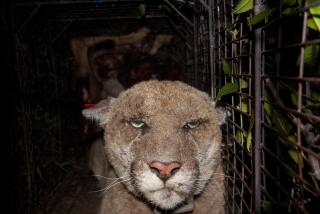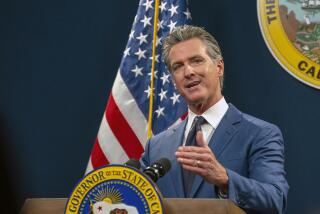Air Panel Bans Chemical for Dry Cleaning
Southern California air quality officials on Friday enacted the nationâs first ban on perchloroethylene, or âperc,â a chemical widely used by dry cleaners.
By 2020, no more dry-cleaning machines that require the chemical will be permitted in Los Angeles, Orange, Riverside or San Bernardino counties. That is one year later than originally proposed and the longest lead time for any air pollution control regulation in the Los Angeles region.
The regulation approved by the South Coast Air Quality Management District board applies to 2,086 neighborhood dry cleaners. Industry representatives, health officials and activists from across the country paid close attention to the matter because other cities could follow suit. Chicago officials, for example, are considering a similar measure.
âItâs the death knell for âpercâ dry cleaning in this area. Itâs the first place in the nation to do this, and it will cause a ripple effect across the country,â said Martin Schlageter of the Santa Monica-based Coalition for Clean Air.
Perchloroethylene is a sweet-smelling solvent that is tough on stains, but it can be bad for human health. Blouses, jackets and slacks are immersed in a solvent bath, and each time a dollop of gravy or splash of mud is removed, a puff of toxic pollution is released.
Air quality officials estimate that 850 tons of the chemical are released in the Los Angeles region annually, ranking it as one of the most abundant airborne toxic substances and posing an unacceptably high cancer risk, although industry officials dispute that assertion.
The air boardâs unanimous decision culminates two years of contentious negotiations with dry cleaners and pilot programs that persuaded officials that other cleaning methods are ready for use.
The decision came one month after the board postponed action on the matter after a raucous, six-hour public hearing.
Hundreds of dry cleaners, many of them Korean American, shouted and marched in protest outside the AQMDâs headquarters in Diamond Bar on Friday.
Air quality board members, most of whom are local elected officials, clearly were uncomfortable regulating mom-and-pop cleaning shops in their communities.
Although the 12-member board gave environmentalists the solvent ban they wanted, it sought to reduce the impact on dry cleaners with incentives and flexible compliance methods to smooth the transition to solvent-free cleaning.
âThis allows the industry to move forward in a manner with a noneconomic impact and allows the environmental goals to move forward,â said board member William Burke.
Over the next several years, more restrictions are scheduled for cleaning machines that use the chemical to reduce toxic emissions and nudge dry cleaners toward alternative technologies.
Beginning Jan. 1, new dry cleaners must install machines that do not use the chemical and existing cleaners cannot add such machines.
After November 2007, dry cleaners will be permitted just one such machine in their shop, provided that it is fitted with advanced controls that cut emissions by about 80% over current models and complies with a toxic risk-based guideline that applies to other polluters, such as oil refiners and metal-plating shops.
However, 18 dry cleaners now using old, high-polluting equipment are required to switch to alternative technologies or advanced machines by July 2004.
Also, the AQMD will provide $2 million to help small businesses pay for clean, new machines.
Some of them use water-based cleansers, carbon dioxide or low-polluting solvents, and can cost more than current technologies.
Peter Sinsheimer, director of the Pollution Prevention, Education and Research Center at Occidental College, has successfully tested those technologies and said that the regulation approved Friday will expedite their use.
âThis is good for the industry, good for the environment and good for workers,â Sinsheimer said.
Industry representatives opposed any ban on the chemical and remain skeptical about some of the new technologies.
They hope to revisit the matter in two years, when a report due to the AQMD board will describe the state-of-the-art technology in the dry-cleaning industry.
Opponents included chemical makers Dow Chemical and PPG Industries, as well as the International Fabricare Institute, which represents dry cleaners worldwide.
âThis is bad for the dry cleaners,â said Kee Whan Ha, president of the Korean American Federation of Los Angeles. âIt was not reasonable. Iâm very disappointed.â
But Sandra Giarde of the California Cleaners Assn. praised the decision and predicted that dry cleaners will find ways to comply without undue burden.
âItâs the fairness we asked for,â she said. âYour clothes are still going to be cleaned in the same solvent they were before, and consumers will still be able to go to the neighborhood dry cleaners.â
More to Read
Sign up for Essential California
The most important California stories and recommendations in your inbox every morning.
You may occasionally receive promotional content from the Los Angeles Times.










